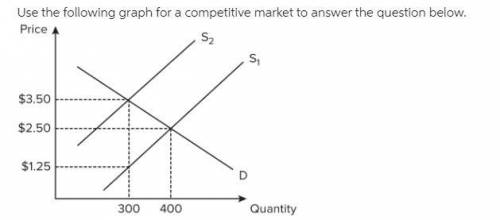

Answers: 1


Another question on Business

Business, 22.06.2019 11:20
Money aggregates identify whether each of the following examples belongs in m1 or m2. if an example belongs in both, be sure to check both boxes. example m1 m2 gilberto has a roll of quarters that he just withdrew from the bank to do laundry. lorenzo has $25,000 in a money market account. neha has $8,000 in a two-year certificate of deposit (cd).
Answers: 3

Business, 22.06.2019 14:10
When a shortage or a surplus arises in the loanable funds market a. the supply of loanable funds changes to return the economy to its original real interest rate b. the nominal interest rate is pulled to the new equilibrium level c. the demand for loanable funds changes to return the economy to its original real interest rate d. the real interest rate is pulled to the new equilibrium level
Answers: 3

Business, 22.06.2019 18:20
Now ray has had the tires for two months and he notices that the tread has started to pull away from the tire. he has already contacted the place who sold the tires and calmly and accurately explained the problem. they didn’t him because they no longer carry that tire. so he talked with the manager and he still did not get the tire replaced. his consumer rights are being violated. pretend you are ray and write a letter to the company’s headquarters. here are some points to keep in mind when writing the letter: include your name, address, and account number, if appropriate. describe your purchase (name of product, serial numbers, date and location of purchase). state the problem and give the history of how you tried to resolve the problem. ask for a specific action. include how you can be reached.
Answers: 3

Business, 22.06.2019 20:30
John and daphne are saving for their daughter ellen's college education. ellen just turned 10 at (t = 0), and she will be entering college 8 years from now (at t = 8). college tuition and expenses at state u. are currently $14,500 a year, but they are expected to increase at a rate of 3.5% a year. ellen should graduate in 4 years--if she takes longer or wants to go to graduate school, she will be on her own. tuition and other costs will be due at the beginning of each school year (at t = 8, 9, 10, and 11).so far, john and daphne have accumulated $15,000 in their college savings account (at t = 0). their long-run financial plan is to add an additional $5,000 in each of the next 4 years (at t = 1, 2, 3, and 4). then they plan to make 3 equal annual contributions in each of the following years, t = 5, 6, and 7. they expect their investment account to earn 9%. how large must the annual payments at t = 5, 6, and 7 be to cover ellen's anticipated college costs? a. $1,965.21b. $2,068.64c. $2,177.51d. $2,292.12e. $2,412.76
Answers: 1
You know the right answer?
Assume the government imposes a $2.25 tax on suppliers, which results in a shift of the supply curve...
Questions


Social Studies, 11.10.2020 18:01


History, 11.10.2020 18:01


Physics, 11.10.2020 18:01


Mathematics, 11.10.2020 18:01

Health, 11.10.2020 18:01

History, 11.10.2020 18:01


Biology, 11.10.2020 18:01

Mathematics, 11.10.2020 18:01

Mathematics, 11.10.2020 18:01

Mathematics, 11.10.2020 18:01

History, 11.10.2020 18:01

English, 11.10.2020 18:01

Mathematics, 11.10.2020 18:01


Biology, 11.10.2020 18:01

 to
to  , the sale will become fewer. As the government imposes a $2.25 tax on suppliers, the seller will receive less money despite getting more money for each sale from the customer.
, the sale will become fewer. As the government imposes a $2.25 tax on suppliers, the seller will receive less money despite getting more money for each sale from the customer. 


